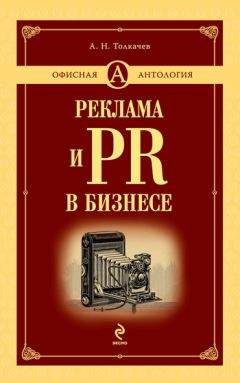Ричард Харрис - Психология массовых коммуникаций

Скачивание начинается... Если скачивание не началось автоматически, пожалуйста нажмите на эту ссылку.
Жалоба
Напишите нам, и мы в срочном порядке примем меры.
Описание книги "Психология массовых коммуникаций"
Описание и краткое содержание "Психология массовых коммуникаций" читать бесплатно онлайн.
«Предупреждён – значит вооружён». Такой эпиграф мог бы открывать эту книгу. И не имеет значения, кто возьмёт её в руки. Специалист почерпнёт в ней новые приёмы и подходы к анализу стратегии и тактики СМИ. Любознательный обыватель научится обеспечивать собственную информационную безопасность.
Кроме того картина информационного ландшафта современного общества от предвыборного управления массовым сознанием до рекламы памперсов оказывается настолько захватывающей, что однажды начав читать эту книгу, вы уже не оставите её недочитанной.
van der Voort, T. H. A. (1986). Television violence: A child's eve view. Amsterdam: North-Holland.
van der Voort, T. H. A., Valkenburg, P. M. (1994). Television's impact on fantasy play: A review of research. Developmental review, 14, 27–51.
van Dijk, T. A. (Ed.). (1985 a). Discourse and communication. Berlin, Germany: deGruyter.
van Dijk, T. A. (1985 b). Introduction: Discourse analysis in (mass) communication research. In: T. A. van Dijk (Ed.). Discourse and communication (p. 1–9). Berlin, Germany: deGruyter.
van Dijk, T. A. (1988). News as discourse. Hillsdale, NJ: Lawrence Eribaum Associates.
van Evra, J. P. (1997). Television and child development (2nd ed.). Mahwah, NJ: Lawrence Eribaum Associates.
Vidmar, N., Rokeach, M. (1974). Archie Bunker's bigotry: A study in selective perception and exposure. Journal of Communication, 24(1), 35–47.
Vincent, I. (1996, June II). Rebel dispatches on the Net. World Press Review, 23–24.
Vincent. R. C., Davis, D. K., Boruszkowski, L. A. (1987). Sexism on MTV: The portrayal of women in rock videos. Journalism Quarterly, 64(4), 750–755.
Vokey, J. R., Read, J. D. (1985). Subliminal messages: Between the devil and the media. American Psychologist, 40, 1231–1239.
Volgy, T. J.. Schwarz, J. E. (1980). TV entertainment programming and sociopolitical altitudes. Journalism Quarterly, 57, 150–155.
von Feilitzen, C., Strand, H., Nowak, K., Andren, G. (1989). To be or not to be in the TV world: Ontological and methodological aspects of content analysis. European Journal of Communication, 4, 11–32.
Vorderer, P., Wuiff, H. J., Friedrichsen, M. (Eds.). (1996), Suspense: Conceptualizations, theoretical analyses, and empirical explorations. Mahwah, NJ: Lawrence Eribaum Associates.
Wallack, L. (1990). Improving health promotion: Media advocacy and social marketing approaches. In: C. Atkin L. Wallack (Eds.). Mass communication and public health (p. 147–163). Newbury Park, CA: Sage.
Wallack, L., Dorfman, L., Jernigan, D., Themba, M. (1993). Media advocacy andpublic health. Newbury Park, CA: Sage.
Walters, R. H., Willows, D. C. (1968). Imitative behavior of disturbed and nondisturbed children following exposure to aggressive and nonaggressive models. Child Development, 39, 79–89.
Wanta, W. (1997). The public and the national agenda: How people learn about important issues. Mahwah, NJ: Lawrence Eribaum Associates.
Ward, S., Wackman, D., Wartella, E. (1977). How children learn to buy: The development of consumer information-processing skills. Beverly Hills, CA: Sage.
Wartella, E. (1980). Individual differences in children's responses to television advertising. In: E. L. Palmer A. Dorr (Eds.). Children and the faces of television: Teaching, violence, and selling (p. 307–322). New York: Academic Press.
Wartella, E., Hcintz, K. E., Aidman, A. J., Mazzarella, S. R. (1990). Television and beyond: Children's video media in one community. Communication Research, 17. 45–64.
Waters, H. R, Huck, J. (1988. January 25). TV's new racial hue. Newsweek, 52–54.
Watkins, B. (1988). Children's representations of television and real-life stories. Communication Research, 15, 159–184.
Watkins, B. A., Huston-Stein, A., Wright. J. C. (1980). Effects of planned television programming. In: E. L. Palmer A. Dorr (Eds.). Children and the faces of television (p. 49–69), New York: Academic Press.
Watt. J. H., Mazza, M., Snyder. L. (1993). Agenda-setting effects of television news coverage and the effects delay curve. Communication Research, 20, 408–435.
Weaver, J. B. (1991). Responding to erotica: Perceptual processes and dispositional implications. In: J. Bryant D. Zillmann (Eds.). Responding to the screen (p. 329–354) Hillsdale, NJ: Lawrence Eribaum Associates.
Weaver, J. В ., Masland, J. L., Zillmann, D. (1984). Effects of erotica on young men's aesthetic perception of their female sexual partners. Perceptual and Motor Skills, 58, 929–930.
Weaver, J., Wakshlag, J. (1986). Perceived vulnerability to crime, criminal victimization experience, and television viewing. Journal of Broadcasting Electronic Media, 30, 141–158.
Webster, J. G., Wakshlag, J. (1985). Measuring exposure to television. In: D. Zillmann J. Bryant (Eds.). Selective exposure to communication (p. 35–62). Hillsdale, NJ: Lawrence Eribaum Associates.
Weigel, R. H., Loomis, J., Soja, M. (1980). Race relations on prime time television. Journal of Personality and Social Psychology. 39(5). 884–893.
Weimann, G., Brosius, H. B. (1991). The news-worthiness of international terrorism. Communication Research, 18, 333–354.
Weiss, A. J., Wilson, B. J. (1998). Children's cognitive and emotional responses to the portrayal of negative emotions in family-formatted situation comedies. Human Communication Research, 24, 584–609.
Wenner, L. A. (1989). The Super Bowl pregame show: Cultural fantasies and political subtext. In: L. A. Wenner (Ed.). Media, sports, society (p. 157–179). Newbury Park, CA:Sage.
Wenner, L. A., Gantz, W. (1989). The audience experience with sports on television. In: L. A, Wenner (Ed.). Media, sports, society (p. 241–269). Newbury Park, CA: Sage.
Wernick, R. (1996, August). Let's hear it for the lowly sound bite! Smithsonian, 27(5), 62–65.
Weston, M.A. (1996). Native Americans in the news: Images of Indians in the twentieth century press. West-port, CT: Greenwood.
Weymouth, L. (1981, January-February). Walter Cronkit remembers. Washington Journalism Review, p. 23.
Whannel, G. (1992). Fields in vision: Television sport and cultural transformation. London: Routledge. What's so funny? (1997, December 20). The Economist. (Reprinted in: World Press Review, March 1998, p. 18–19.)
What's up, doc? (1995, February 5). Manhattan Mercury, p. A7.
Whillock, R. K. (1997). Cyber-politics: The on-line strategies of '96. American Behavioral Scientist, 40, 1208–1225.
White, L. A. (1979). Erotica and aggression: The influence of sexual arousal, positive affect, and negative affect on aggressive behavior. Journal of Personality and Social Psychology, 37, 591–601.
Wilcox, B. L. (1987). Pornography, social science, and politics: When research and ideology collide. American Psychologist, 42, 941–943.
Wilhoit, G. C., de Bock, H. (1976). "All in the Family" in Holland. Journal of Communication, 26(1), 75–84.
Will, E. (1987). Women in media. The Other Side, 23(4). 44–46.
Williams, B. (1979, November). Report of the Departmental Committee on Obscenity and Film Censorship. London: Her Majesty's Stationery Office. Command 7772
Williams. F., Phillips, A., Lum, P. (1985). Gratifications associated with new communication technologies. In: K. Rosengren, L. Wenner, P. Palmgreen (Eds.). Mediagratifications research: New perspectives. Beverly Hills, CA: Sage.
Williams, F., Strover, S., Grant, A. E. (1994). Social aspects of new media technologies. In: J. Bryant and D. Zillmann (Eds.). Media effects: Advances in theory and research (p. 463–482). Hillsdale, NJ: Lawrence Eribaum Associates.
Williams, Т . М . (Ed.). (1986). The impact of television. Orlando, FL: Academic Press. Willwerth. J. (1993, February 15). It hurts like crazy. Time, 53.
Wilson, B. J. (1987). Reducing children's emotional reactions to mass media through rehearsed explanation and exposure to a replica of a fear object. Human Communication Research, 14, 3–26.
Wilson, B. J. (1989). Desensitizing children's emotional reactions to the mass media. Communication Research, 16, 723–745.
Wilson, B. J. (1991). Children's reactions to dreams conveyed in mass media programming. Communication Research, 18. 283–305.
Wilson, B. J., Cantor, J. (1987). Reducing fear reactions to mass media: Effects of visual exposure and verbal explanation. In: M. McLaughlin (Ed.). Communication yearbook 10 (p. 553–573). Newbury Park, CA: Sage.
Wilson, B. J., Hoffner, C., Cantor, J. (1987). Children's perceptions of the effectiveness of techniques to reduce fear from mass media. Journal of Applied Developmental Psychology, 8, 39–52.
Wilson, B. J., Linz, D., Donnerstein, E., Stipp, H. (1992). The impact of social issue television programming on attitudes toward rape. Human Communication Research, 19, 179–208.
Wilson, B. J., Weiss, A. J. (1993). The effects of sibling coviewing on preschoolers' reactions to a suspenseful movie sequence. Communication Research, 20, 214–248.
Wilson, C. C. II, Gutierrez, F. (1995). Race, multiculturalism, and the media: From mass to class communication. Thousand Oaks. CA: Sage.
Wilson, J. R., Wilson, S. L. R. (1998). Mass media/ Mass culture (4th ed.). New York: McGraw-Hill.
Winbush, D. (1989, June 19). Bringing Satan to heel. Time, 54–55.
Windahl, S. (1981). Uses and gratifications at the crossroads. In: G. C. Wilhoit H. de Bock (Eds.). Mass communication review yearbook (Vol. 2, p. 174–185). Newbury Park, CA: Sage.
Winn, M. (1977). The plug-in drug: Television, children, and the family. New York: Viking Penguin. Winn, M. (1987). Unplugging the plug-in drug. New York: Penguin Books.
Witte, K. (1992). Preventing AIDS through persuasive communications. In: F. Korzenny S. Tmg-Toomey (Eds.). Mass media effects across cultures (p. 67–86). Newbury Park, CA: Sage.
Wittebols, J. H. (1991). The politics and coverage of terrorism: From media images to public consciousness. Communication Theory, I, 253–266.
Wober, J. M. (1978). Televised violence and paranoid perception: The view from Great Britain. Public Opinion Quarterly, 42, 315–321.
Wober, J. M. (1986). The lens of television and the prism of personality. In: J. Bryant D. Zillmann (Eds.). Perspectives on media effects (p. 205–231). Hillsdale, NJ: Lawrence Eribaum Associates.
Wober, J. M., Gunter, B. (1986). Television audience research at Britain's Independent Broadcasting Authority, 1974–1984. Journal of Broadcasting Electronic Media, 30, 15-31.
Wood, W, Wong, F. Y, Chachere, J. G. (1991). Effects of media violence on viewers' aggression in unconstrained social interaction. Psychological Bulletin, 109, 371–383.
Wresch, W. (1996). Disconnected: Haves and have-nots in the information age. New Brunswick, NJ: Rutgers University Press.
Wright, C. R. (1986). Mass communication: A sociological perspective (3rd ed.). New York: Random House. Wright, J. C., Kunkel, D., Pinon, M., Huston, A. C. (1989). How children reacted to televised coverage of the space shuttle disaster. Journal of Communication, 39(2), 27–45.
Wright. J. C., St. Peters, M., Huston, A. C. (1990). Family television use and its relation to children's cognitive skills and social behavior. In: J. Bryant (Ed.). Television and the American family (p. 227–251). Hillsdale, NJ: Lawrence Eribaum Associates.
Wroblewski. R., Huston, A. C. (1987). Televised occupational stereotypes and their effects on early adolescence: Are they changing? Journal of Early Adolescence, 7, 283–297
Wulf, S. (1996. July 29). An old sweet song. Time, 67–69.
Wyer, R. S., Collins, J. E. (1992). A theory of humor elicitation. Psychological Review, 99, 663–688.
Yang, N.. Linz, D. (1990). Movie ratings and the content of adult videos: The sex-violence ratio. Journal of Communication, 40(2), 28–32.
Yorke, D., Kitchen, P. (1985). Channel flickers and video speeders. Journal of Advertising Research, 25(2), 21–25.
Young, В . М . (1991). Television advertising and children. New York: Oxford University Press.
Zechmeister, E. В ., Johnson, J. E. (1992). Critical thinking: A functional approach. Pacific Grove, CA: В rooks-Cole.
Zeiizer, B. (1992). CNN, the Gulf War, and journalistic practice. Journal of Communication, 42(1), 66–81.
Zillmann, D. (1978): Attribution and mis-attribution of excitatory reactions. In: J. H. Harvey, W. J. Ickes. R. E Kidd (Eds.). New directions in attribution research (Vol. 2, p. 335–368). Hillsdale, NJ: Lawrence Eribaum Associates.
Zillmann, D. (1980). Anatomy of suspense. In: P H. Tannenbaum (Ed.). The entertainment functions of television (p. 133–163). Hillsdale, NJ: Lawrence Eribaum Associates.
Zillmann, D. (1983). Transfer of excitation in emotional behavior. In: J. T. Cacioppo R. E. Petty (Eds.). Social psychophysiology (p. 215–240). New York: Guilford Press.
Zillmann, D. (1984). Connections between sex and aggression. Hillsdale, NJ: Lawrence Eribaum Associates.
Zillmann, D. (1991 a). Television viewing and physiological arousal. In: J. Bryant D. Zillmann (Eds.). Responding to the screen: Reception and reaction processes (p. 103–133). Hillsdale, NJ: Lawrence Eribaum Associates.
Zillmann, D. (1991 b). Empathy: Affect from bearing witness to the emotions of others. In: J. Bryant D. Zillmann (Eds.). Responding to the screen: Reception and reaction processes (p. 135—167). Hillsdale, NJ: Lawrence Eribaum Associates.
Zillmann, D. (1991 c). The logic of suspense and mystery. In: J. Bryant D. Zillmann (Eds.). Responding to the screen: Reception and reaction processes (p. 281–303). Hillsdale, NJ: Lawrence Eribaum Associates.
Zillmann, D., Bryant, J. (1982). Pornography, sexual callousness, and the trivialization of rape. Journal of Communication, 32(4), 10–21.
Zillmann, D., Bryant. J. (1984). Effects of massive exposure to pornography. In: N. M. Malamuth E. Donnerstein (Eds.). Pornography and sexual aggression (p. 115–141). Orlando, FL: Academic Press.
Zillmann, D., Bryant, J. (1988 a). Pornography's impact on sexual satisfaction. Journal of Applied Social Psychology, 18, 438–453.
Zillmann. D.. Bryant, J. (1988 b). Effects of proiuiiged consumption of pornography on family values. Journal of Family Issues, 9, 518–544.
Zillmann, D., Bryant, J. (1988 c). A response to Linz and Donnerstein. Journal of Communication, 38(2), 185–192.
Zillmann, D., Bryant, J. (Eds.). (1989). Pornography: Research advances and policy considerations. Hillsdale, NJ: Lawrence Eribaum Associates.
Zillmann, D., Bryant, J. (1991). Responding to comedy: The sense and nonsense in humor. In: J. Bryant D. Zillmann (Eds.). Responding to the screen: Reception and reaction processes (p. 261–279). Hillsdale, NJ: Lawrence Eribaum Associates.
Zillmann, D., Bryant, J., Comisky, P. W., Medoff, N. J. (1981). Excitation and hedonic valence in the effect of erotica on motivated intermale aggression. European Journal of Social Psychology, II, 233–252.
Zillmann. D., Bryant, J., Huston, A. C. (Eds.). (1994). Media, children, and the family. Hillsdale, NJ: Lawrence Eribaum Associates.
Zillmann, D., Bryant, J.. Sapolsky, B. S. (1979). The enjoyment of watching sport contests. In: J. H. Gold-stein (Ed.). Sports, games, and play: Social and psychological viewpoints (p. 297–355). Hillsdale, NJ: Lawrence Eribaum Associates.
Zillmann, D., Mundorf, N. (1987). Image effects in the appreciation of video rock. Communication Research, 14, 316–334.
Zillmann, D., Weaver, J. B. (1996). Gender-socialization theory of reactions to horror. In: J. B. Weaver R. Tamborini (Eds.). Horror films: Current research on audience preferences and reactions (p. 81–101). Mahwah, NJ: Lawrence Eribaum Associates.
Подписывайтесь на наши страницы в социальных сетях.
Будьте в курсе последних книжных новинок, комментируйте, обсуждайте. Мы ждём Вас!
Похожие книги на "Психология массовых коммуникаций"
Книги похожие на "Психология массовых коммуникаций" читать онлайн или скачать бесплатно полные версии.
Мы рекомендуем Вам зарегистрироваться либо войти на сайт под своим именем.
Отзывы о "Ричард Харрис - Психология массовых коммуникаций"
Отзывы читателей о книге "Психология массовых коммуникаций", комментарии и мнения людей о произведении.
























